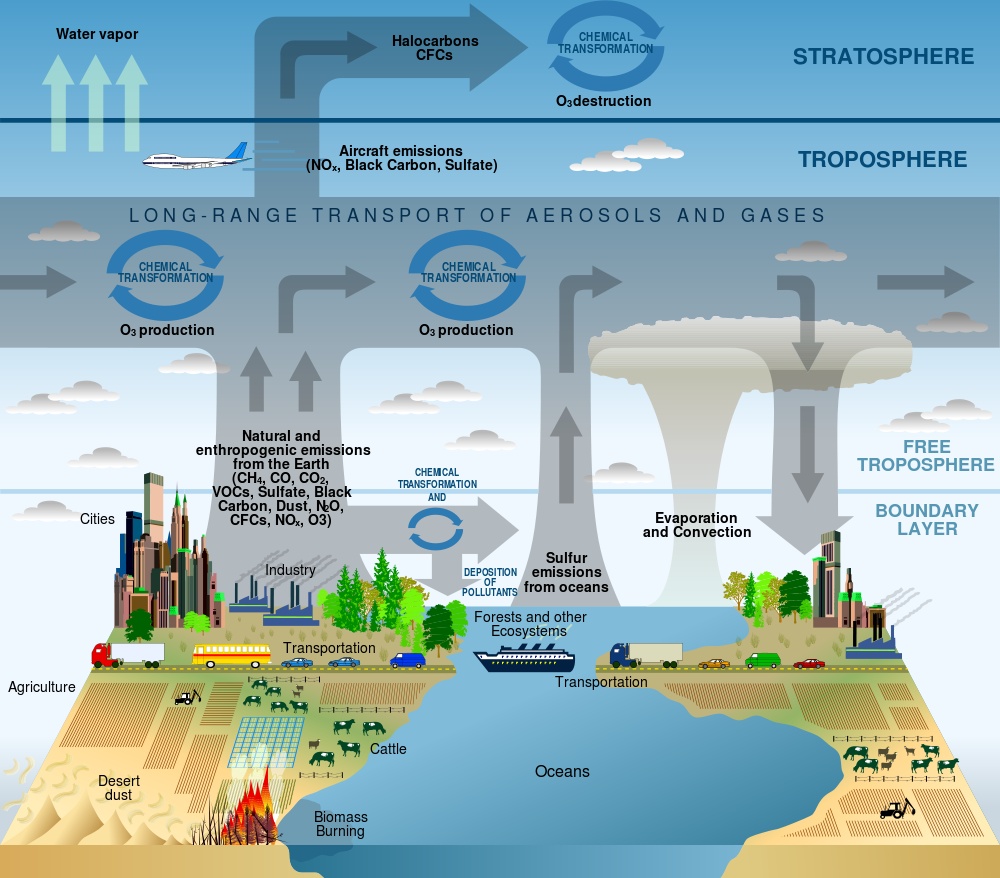Chapter 2. Gadget: Tropospheric Gas Detector
We can easily go several hours without drinking water. We can comfortably go the better part of a day without eating food. But try and go more than a few minutes without breathing. (No, don’t really try.) Understanding the composition of the lower atmosphere—the troposphere—is among the most important environmental measurements we can take.
Everything floating around the troposphere—nitrogen, oxygen, carbon dioxide, water vapor, and all sorts of pollution—winds up in our lungs, on our plants, in our food, and in our water (see Figure 2-1). It dusts our windows, our automobiles, and our buildings. For this reason, the authors (as well as organizations like the American Lung Association) believe that it’s vitally important to know what’s inside every breath we take.
In the old days, when people wanted to know what was in the atmosphere, they used chemically-treated filter paper, and hung it in a breeze. The chemicals reacted with whatever was in the air and would respond by changing color. Or they bubbled the atmosphere through water and measured the different compounds that resulted as gas dissolved in water. This kind of work could only be performed in a dedicated chemistry lab.

Figure 2-1. This illustration shows how different chemicals and other substances move into and through the troposphere. Credit: U.S. Climate Change Science Program, ...
Get Atmospheric Monitoring with Arduino now with the O’Reilly learning platform.
O’Reilly members experience books, live events, courses curated by job role, and more from O’Reilly and nearly 200 top publishers.

